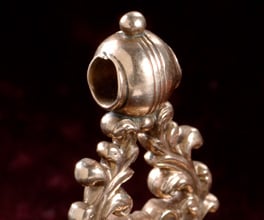Properties and uses of gold
If you have a litre of milk in your fridge you probably know that it weighs about a kilogram. Our metric system of measuring mass is based on water, where one gram is equal to the weight of one cubic centimetre of water. A litre of milk (which is mostly water) is 1000 cubic centimetres so it weighs roughly 1000 grams. Imagine the milk in that carton was replaced with pure or '24-carat' gold. If you went to lift that carton it would weigh almost 20 kilograms. Gold is almost twice as dense as lead.
Now imagine taking a centimetre 'slice' from the bottom of that milk carton. Gold's softness means that you could actually do this with a good steel knife. Gold is 3 on Mohs scale of mineral hardness and steel is around 6. This explains why you sometimes see athletes pretending to bite their gold medals. If gold medals were pure gold, their teeth would leave a mark. This softness makes gold extremely easy to work and fashion into intricate designs. Other metals are added to make stronger alloys and more durable jewellery.
That sliced piece of gold would weigh the same as the original carton of milk, about a kilogram. Gold's malleability means that this kilogram could be beaten to a thin foil or leaf that would easily cover a tennis court. Even thinner layers of gold are used as light filters in helmets for astronauts and the glass of aeroplane cockpits. Gold's malleability is one of the properties that have made it useful in dentistry.
Gold is also the most ductile of metals too. That same kilogram slice of gold could easily be drawn into a wire - about the thickness of human hair - 5 kilometres long.
Because gold conducts electricity it is used in electronics, especially where reliability is important. For critical components like airbags in cars, gold circuits provide the best reliability in long-term applications. The small amount of gold in a mobile phone or a computer can be recycled and used again in a different application.
This reliability (and recyclability) is due to gold's resistance to rust or tarnish. Gold is an extremely stable or noble metal. Unlike silver or copper- which lose their lustre because they interact with elements in the air- gold remains bright yellow.
It was gold's lustre that was of most interest to diggers on the field and the buyers and jewellers to whom they sold their nuggets and dust. It is gold's appearance that makes it so highly valued in jewellery and coins. Despite a wide range of industrial, scientific and medical uses for gold, the jewellery industry still buys most of the world's supply each year.











